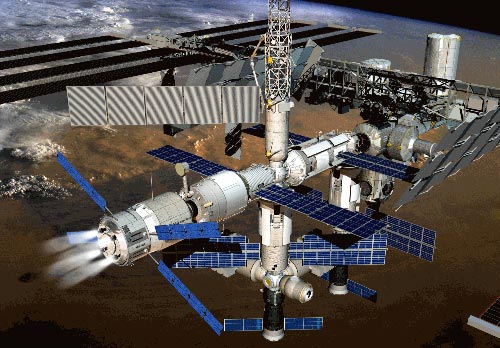After a 4-year hiatus, the plan to establish the International Space Station, a collaborative project involving 16 countries with an estimated investment of up to 50 billion USD, has recently been revived!
At the beginning of March this year, all 16 member countries involved in building the International Space Station (ISS) unanimously agreed to resume construction after a four-year interruption.
The ISS is a collaborative project of 16 countries, including the United States, Russia, France, Germany, Italy, the United Kingdom, Belgium, Denmark, the Netherlands, Norway, Spain, Sweden, Switzerland, Japan, Canada, and Brazil.
The ISS is projected to require a staggering investment of 50 billion USD.
Among these costs, the research expenses for the United States are 27.6 billion USD; for Russia: 3 billion USD; the European Space Agency (ESA) is 3.6 billion USD; Japan: 3.5 billion USD; Canada: 1 billion USD; and the cost of installation in orbit is 11 billion USD.
 |
|
International Space Station. |
The ISS will have a basic structure consisting of a load-bearing framework measuring over 100 meters in length, to which multiple modules and equipment will be attached.
Once completed, the ISS will have a lifespan of 10-15 years, with a total weight of 423 tons, a length of 108 meters, and a width of 88 meters, covering an area equivalent to two small soccer fields. The pressurized module will have a volume comparable to the passenger compartment of two Boeing 747 jets, providing enough space for six astronauts to work long-term.
The ISS will operate at an altitude of 400 km, on an orbit inclined at 51.6 degrees. At this altitude, atmospheric drag will gradually lower the space station’s altitude, necessitating transportation by spacecraft or aircraft every 90 days to raise the station back to its original height.
The construction of the ISS is divided into three phases. The first phase, the preparation stage (1994-1998), mainly involved sending American astronauts to work at the Peace Space Station, training their operational and living skills in space.
The second phase, the installation stage (1998-2001), focused on installing the main components of the ISS to support the weight of three people.
The third phase, the final installation and application stage (2002-2010), primarily completed the station’s installation to accommodate 6-7 people working long-term in orbit.
Due to the large scale of this aerospace project, every aspect from installation, management, and technical challenges to costs has faced significant hurdles, resulting in the construction timeline being extended from the initial completion target of 2003 to 2010.
With the current scale, monitoring the station from the ground is very challenging, as some components still need to be manufactured while installation is underway, requiring simultaneous installation and testing. Additionally, the software provided by hundreds of manufacturers from 16 countries can easily affect each other.
Recently, member countries of the space station have faced the headache that if even one critical component is not launched into orbit on schedule, it can delay the entire project.
In fact, there have been instances where the Russian service module was not launched on time, causing the entire plan to be pushed back by a year; or following the Columbia disaster, the project had to be halted for several years; the long-term crew was reduced from three to two to conserve energy for the station.
Even when the station is completed, operational management will not be easy. Each astronaut requires supply of 658 kg of food, 209 kg of clothing, and other personal items annually. Currently, the cost of sending 1 kg of cargo to the space station is about 22,000 USD, implying that maintaining the space station will require an annual expenditure of around 1.3 billion USD.
Tuyết Nhung


















































